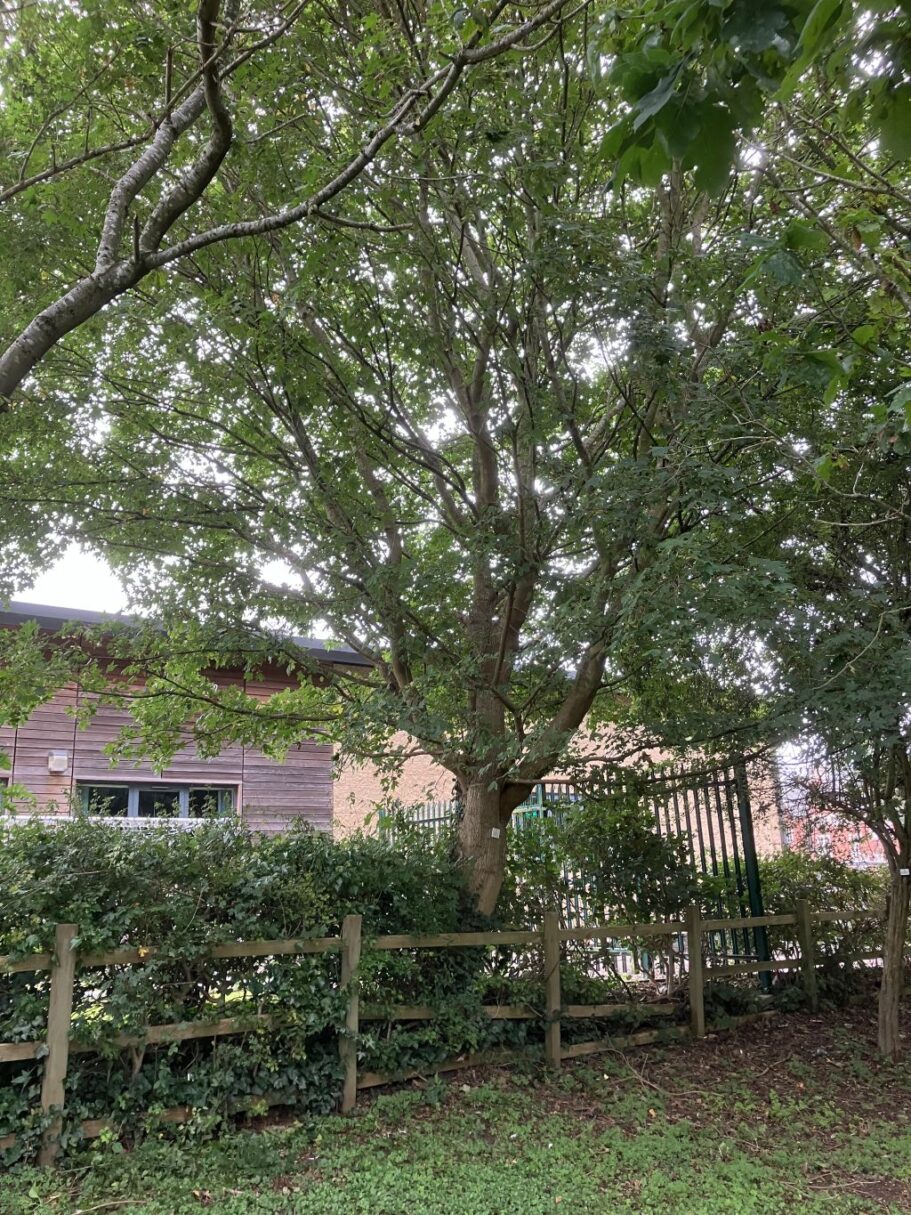#164 FIELD MAPLE
Acer campestre

Planted: 1995
Included in the hedge planted between the Arboretum and the school playing field.
| Distribution: | Native to Europe, including the British Isles, and W Asia. |
| Planting Date: | Included in the hedge planted in 1995 between the Arboretum and the school playing field. |
| Growth Habit: | A picturesque medium sized deciduous tree. Often found in rural hedges. |
| Bark: | Finely fissured, often somewhat corky bark. |
| Leaf: | Turns clear yellow, sometimes flushed red in autumn. |
| Flowers: | Trees are usually monoecious, the flowers are produced in spring at the same time as the leaves open, yellow-green colour, in erect clusters 4 to 6 cm across, and are insect-pollinated. |
| Fruit: | The fruit is a samara (the typical winged fruit of sycamore etc.) with two winged achenes aligned at 180°, each achene is 8 to 10 mm wide, flat, with a 2 cm wing. |
| Toxicity: | Unknown |
| Potential tree size | Tree can reach 15–25 m tall. |
| Uses: | Grown as an ornamental tree. The wood is white, hard and strong, and used for furniture, flooring, wood turning and musical instruments, though the small size of the tree and its relatively slow growth make it an unimportant wood. |
| Plant Hunter: | Native |
| Introduction Date: | Native |
| Anecdotes and Comments: | Royal Horticultural Society Award of Garden Merit 1984 |